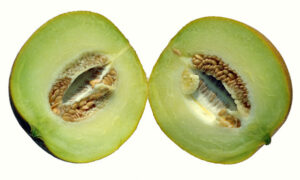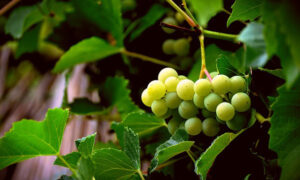Have you ever desired to enjoy your own flavorful and sweet watermelons (Citrullus lanatus) directly from the garden? In addition to being a delectable summer treat, watermelons are good for nutrition and physical hydration.
Here’s the best part – you can grow your watermelon with less effort than you may imagine! When given the correct factors and some attention, watermelons are pretty easy to grow. Read on to find out how to grow watermelon in your garden.
Conditions Needed to Grow Watermelon
Basically to grow them, just know that watermelons enjoy warm, sunny weather and well-draining, fertile soil. Their frost-free growing period would be around 70 and 90 days from when you plant the seeds to when you harvest the fruit. A good time to plant watermelon (for a summer harvest) is during March or April. Just like its relative, the honeydew melon, watermelons need sunny locations and well drained soils.

A good soil pH for watermelon usually ranges between 6.0 and 6.8. They require adequate moisture, particularly when they bloom and set fruit, but do not overwater or the roots will rot. Summertime plants (like watermelons) benefit from regular watering and fertilization, especially with nitrogen, phosphorus, and potassium, to stay healthy and produce fruit.
Plant watermelon seeds or transplants after the last annual frost days and after the temperature has risen to around 70°F. Space the plants between 3 and 5 feet apart within rows.
How to Grow Watermelon in Your Garden: 5 Simple Steps
Growing watermelons in your garden might look hard at first. But it’s actually really simple if you understand the process and follow the right steps. So, here’s the entire process summarized in five simple steps so that you don’t miss any detail.
1. Selecting the Right Variety and Preparing Your Garden
When selecting the right variety/cultivar of watermelons for your garden, you will need to pick the variety best suited for your garden’s climatic zone, available space, and the size of fruit you desire.
Some of the popular varieties that adapt to the home garden include:
- Crimson Sweet
- Sugar Baby
- Black Diamond
- Golden Midget
- Jubilee
- Moon and Stars
Next, prepare the spot in your garden where watermelons would grow best – which is a sunny location over well-drained soil that is rich in organic matter. The soil ought to be prepared by applying compost or organic material to enhance fertility and proper drainage. Plants should be spaced 3-5 feet apart, and if you are short on space, a trellis should be used for vertical growing, and to maintain a watermelon’s access to sunlight for proper growth.

2. Strategies for Seed Placement, Watering, and Irrigation Techniques
Well-planned seed planting, watering, and irrigation practices are crucial to watermelon’s growth and potential size. Place the seeds at the right location, which typically equates to one inch into the ground, and separate them properly as well, usually 2 to 3 feet between rows.
Seeds need a consistent supply of moisture to germinate, so immediately after planting, keep the soil moist until seedlings appear. Afterwards, provide the established plants with enough deep but infrequent watering to flourish their root systems and consistently produce fruit.
Installing drip irrigation systems or soaker hoses provides water right to the roots while avoiding wasted water and the development of foliar disease on plant leaves. Using some mulch around the plants keeps the soil moist for longer, limits weed growth, and helps stabilize the soil temperature.

3. Weed, Pest, and Disease Management
Watermelon plants must also be protected from weeds, pests, and diseases. Weed the planted area frequently to eliminate competition for water and nutrients. Mulching can be used to suppress weeds and maintain field moisture.
Also, regularly check the plants for signs of pests. Aphids, cucumber beetles, leaf miners, and squash bugs are common pests of watermelon – and pests ultimately reduce fruit yield. Remember to use holistic and organic pest management steps in the event of an infestation.
Remove and burn any diseased or infected plant material in order to protect your crop from spreading diseases such as powdery mildew and bacterial fruit blotch.

4. Supporting and Training Watermelon Vines
Properly supporting and training the vines is necessary for watermelon to make the most efficient use of space. This also ensures the fruit gets the appropriate conditions for healthy development.
A vine will grow significantly as a watermelon plant matures, eventually requiring assistance to avoid damage to foliage expansion and the fruit. All vines can be trained to climb trellises or any other support structure in the vegetable garden, maximizing vertical growth to avoid overshadowing other plants.

Alternatively, sturdy stakes or cages can be placed close to individual plants to provide help, allowing the vine to become more self-supporting and reducing the potential for vine breakage. In addition, prune excess leaves regularly to encourage maximal airflow and sunlight infiltration to avoid conditions suitable for powdery mildew.
5. Gentle Fruit Extraction and Proper Storage
Gentle fruit extraction and proper storage are necessary to keep the quality and taste of your watermelons upon harvest. When harvesting, lower the fruit just above the vine using a sharp knife or pruning shears; a stub 4 to 5 inches long must stay attached to the fruit.
Be cautious not to injure the vine while collecting fruits. Keep the watermelons in a dry, cool location where they will not be exposed to direct sunshine once they have been picked.

Store them within a refrigerator at 45 to 50 degrees Fahrenheit to keep the ripening process proceeding and maintain fruit quality. Refuse to pile or stack fruits since this contributes to watermelon squash that causes spoilage. Wash the watermelon under tap water thoroughly before chopping and eating.
Addressing Common Challenges While Growing Watermelon in Your Garden
Among the major problems are pests, which can destroy the plants and decrease fruit production. Using row covers, planting repellent herbs, such as marigolds nearby, and using organic insecticides can counteract the pests.
Diseases such as anthracnose, powdery mildew, fusarium wilt, and bacterial fruit blotch weaken plant health and quality. Therefore, watermelon growers must rotate crops, ensure enough space between the plants, and provide ventilation to avoid diseases.
Disruptions and excessive watering can cause problems such as fruit cracking, and lack of fruit development. So using a drip irrigation system and mulching around the plants is beneficial to maintain the soil moisture.

Final Words
Watermelons are a tasty, juicy, and refreshing fruit and one of the easiest fruits to grow at home. Their flesh contains vitamins and nutrients too. Now you can harvest your own watermelons from your garden with the proper growing conditions and care.
So, don’t wait any longer! Try to grow watermelon and enjoy this delicious fruit throughout the summer!




